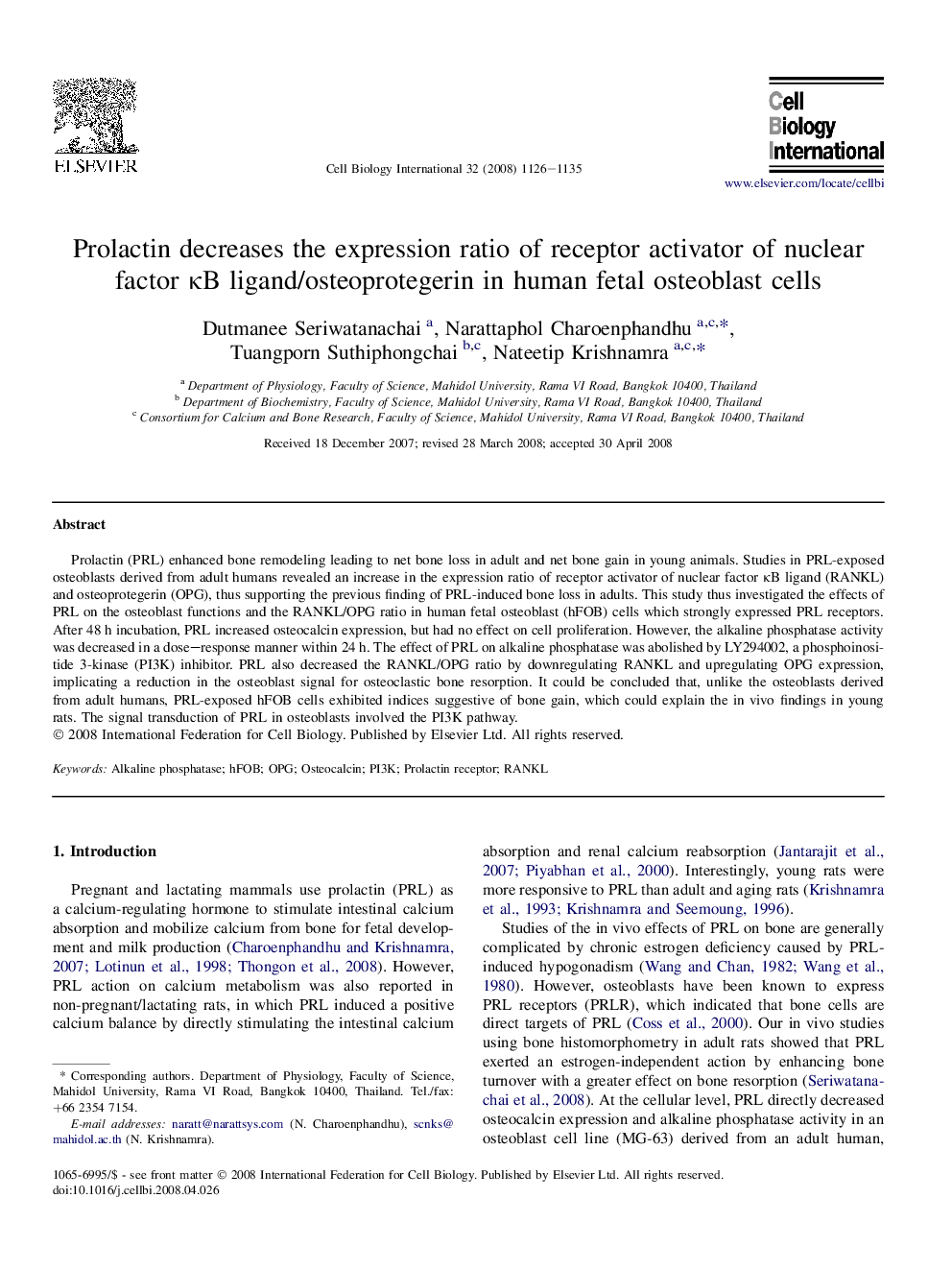| Article ID | Journal | Published Year | Pages | File Type |
|---|---|---|---|---|
| 2067245 | Cell Biology International | 2008 | 10 Pages |
Abstract
Prolactin (PRL) enhanced bone remodeling leading to net bone loss in adult and net bone gain in young animals. Studies in PRL-exposed osteoblasts derived from adult humans revealed an increase in the expression ratio of receptor activator of nuclear factor κB ligand (RANKL) and osteoprotegerin (OPG), thus supporting the previous finding of PRL-induced bone loss in adults. This study thus investigated the effects of PRL on the osteoblast functions and the RANKL/OPG ratio in human fetal osteoblast (hFOB) cells which strongly expressed PRL receptors. After 48 h incubation, PRL increased osteocalcin expression, but had no effect on cell proliferation. However, the alkaline phosphatase activity was decreased in a dose-response manner within 24 h. The effect of PRL on alkaline phosphatase was abolished by LY294002, a phosphoinositide 3-kinase (PI3K) inhibitor. PRL also decreased the RANKL/OPG ratio by downregulating RANKL and upregulating OPG expression, implicating a reduction in the osteoblast signal for osteoclastic bone resorption. It could be concluded that, unlike the osteoblasts derived from adult humans, PRL-exposed hFOB cells exhibited indices suggestive of bone gain, which could explain the in vivo findings in young rats. The signal transduction of PRL in osteoblasts involved the PI3K pathway.
Related Topics
Life Sciences
Biochemistry, Genetics and Molecular Biology
Biophysics
Authors
Dutmanee Seriwatanachai, Narattaphol Charoenphandhu, Tuangporn Suthiphongchai, Nateetip Krishnamra,
